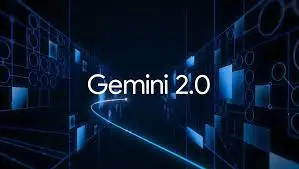Google released Gemini 2.0, a new AI model for the agentic era. Only one model, the smaller, less expensive 2.0 Flash, is being distributed, and it is still in what Google refers to as an “experimental preview.”
However, according to Demis Hassabis, the CEO of Google DeepMind and the leader of all the company’s AI initiatives, he may be thrilled by the new Gemini 2.0 model’s comprehensiveness and calls it a significant day.
“Effectively, it’s on par with the current Pro model,” Hassabis claims. For the same speed, performance, and cost efficiency, you could consider it to be a full-level superior. That truly makes us happy. It is also capable of accomplishing new things in addition to being better at the things that Gemini used to be able to do. Now that Gemini 2.0 has native audio and image generation capabilities, it also introduces new multimodal capabilities that, according to Hassabis, set the stage for the next big thing in AI: agents.
Also Read: Google Unveiled the Willow Quantum Chip, a quantum computing innovation of the future
Artificial intelligence (AI) bots that can go off and do tasks on your behalf are referred to as agentic AI. Since early spring, Google has been demonstrating Project Astra, a visual system that can recognize things, guide you through the environment, and locate your glasses. For Astra, Gemini 2.0 is a significant advancement, according to Hassabis.
Also Read: Genie 2 from Google DeepMind can Create Interactive 3D Environments
Additionally, Google is introducing Project Mariner, a new Chrome plugin that is experimental and can utilize your web browser for you. Additionally, there is a new Gemini 2.0-based agent that can analyze your screen and improve your video gameplay, as well as Jules, an agent designed especially to assist developers in identifying and correcting problematic code. Although Hassabis refers to the game agent as “an Easter egg,” he also notes that it is the kind of thing that a fully multimodal, integrated model can provide for you.
Gemini 2.0 is the cornerstone of the agent-based future, which Hassabis believes will truly begin around 2025. Although he is cautious to point out that there are other benefits outside performance, he says Google is still seeing advantages as it trains new models, and he is as excited about the efficiency and speed improvements despite the industry-wide slowdown in model advancements.
You won’t be surprised to learn that Google intends to utilize Gemini 2.0 everywhere. It will power Google Search’s AI Overviews, which the company claims now reach 1 billion people and will become more sophisticated and complicated as a result of Gemini 2.0. Naturally, it will be present in the Gemini bot and app and will eventually enable Google’s AI features in Workspace and other places. To be able to accomplish more with Gemini in more places, Google has attempted to incorporate as many functions as possible within the model itself rather than operating several separate and fragmented products.
Also Read: How to use Google Gemini Live in Indian Languages? Simple Guide
The objective is to incorporate all of the features, output types, and multimodality into the fundamental Gemini model. According to Hassabis, “We’re trying to build the most general model possible.”
According to Hassabis, there are both new and old issues to address as the agentic era of AI gets underway. The traditional ones, which deal with performance, efficiency, and inference cost, remain timeless. In many respects, the new ones are unknown.
For example, what safety hazards will these agents, acting independently, present in the real world? Hassabis believes additional research is needed, but Google is taking some measures with Mariner and Astra. He asserts that additional safety measures, such as testing in sandboxes that have been hardened, will be required. That, in my opinion, will be crucial for testing agents rather than in the wild. They will be more beneficial, but there will be greater dangers as well.
You can already utilize Gemini 2.0 by selecting the new model in the Gemini web app, even if it is currently in the experimental stage. (When you will be able to try the non-Flash models is still unknown.) It will be available for additional Gemini platforms, all of Google’s other products, and the entire internet early next year, according to Hassabis.
Also Read: Google.org Invests $20 Million in Scientists Utilizing AI to Advance Science


















